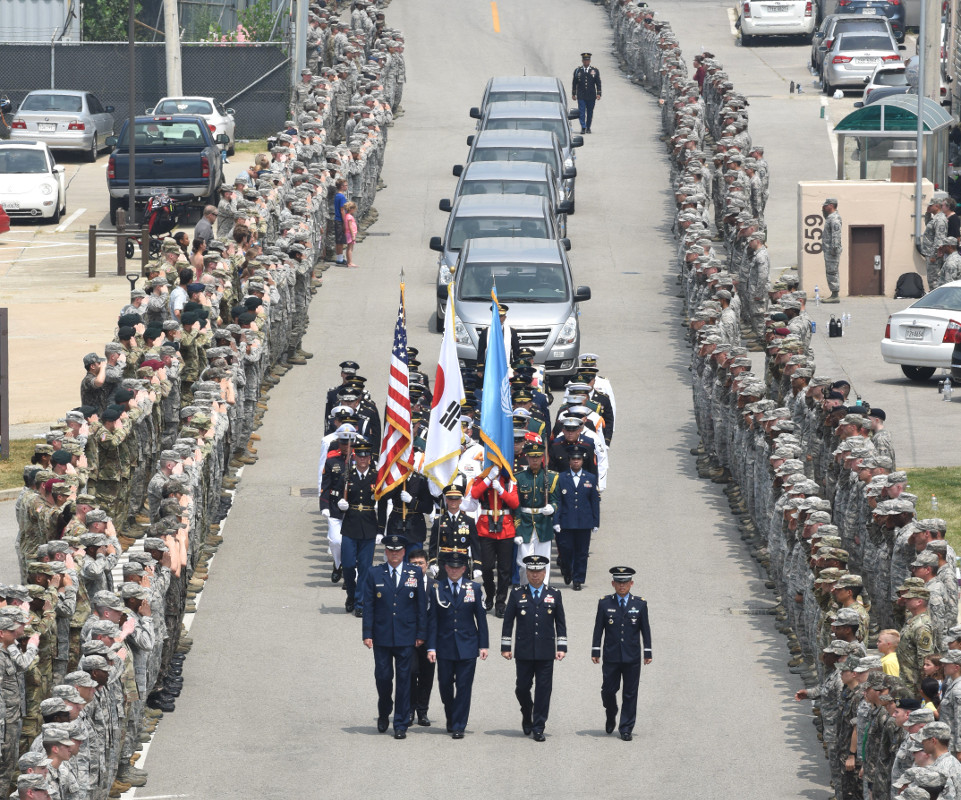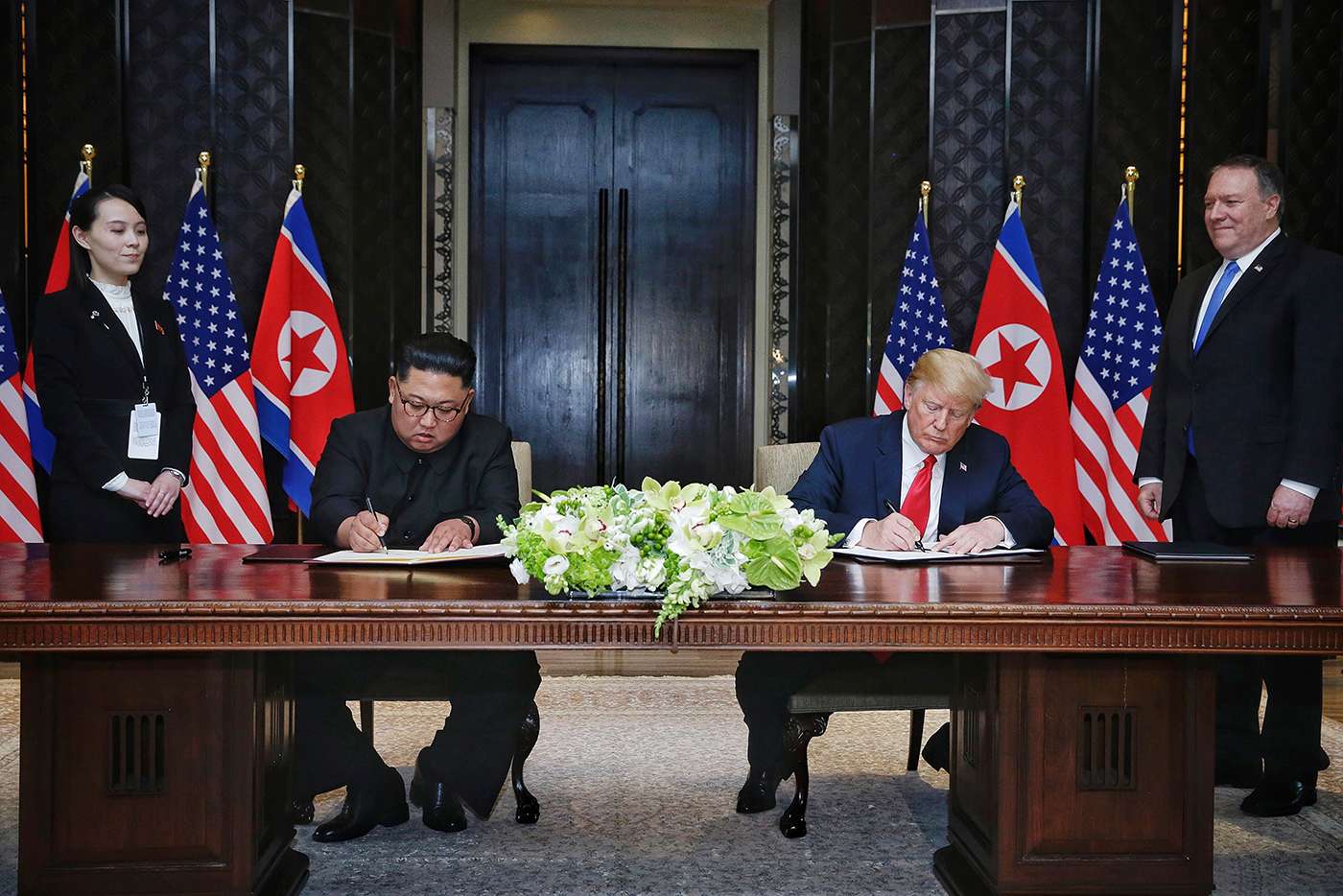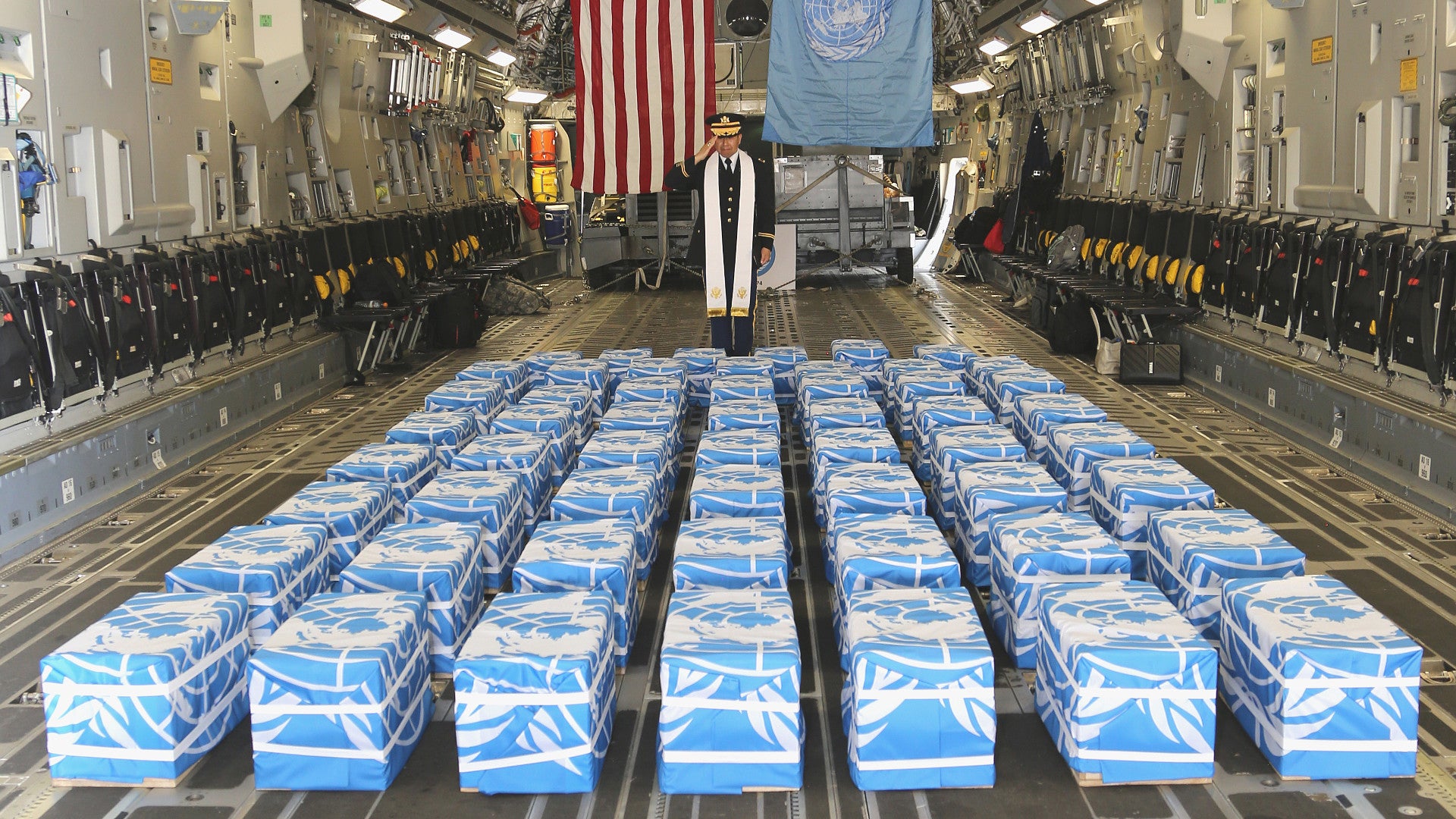North Korea has turned over 55 cases of remains of American troops who died during the Korean War to the United States, which U.S. President Donald Trump got North Korean leader Kim Jong Un to promise to do after a historic, but controversial summit. It’s a positive step, but the U.S. government still has a lot of work to do to give the families of the fallen closure and make the most of this apparent diplomatic momentum.
The White House formally announced the repartition operation on July 26, 2018, though the remains arrived at Osan Air Base in South Korea via a U.S. Air Force C-17 Globemaster III transport plane on July 27, 2018, local time. The transfer did appear intended to coincide with the 65th anniversary of the signing of the Armistice Agreement that ended the majority of the fighting on the Peninsula, which the North Korean government celebrates as a holiday called the “Day of Victory in the Great Fatherland Liberation War.”
The C-17 “is accompanied by service members from United Nations Command Korea and technical experts from the Defense POW/MIA Accounting Agency,” the White House said in a statement. “The United States owes a profound debt of gratitude to those American service members who gave their lives in service to their country and we are working diligently to bring them home.”
The aircraft, based at Joint Base Pearl Harbor-Hickam in Hawaii, transported the remains to Osan from Wonsan in North Korea. A solemn ceremony followed as American and South Korean personnel offloaded the cases and placed them into six silver SUVs. A procession led by personnel carrying the flags of the United States, South Korea, and the United Nations, then took the remains from the tarmac to another site on the base for storage.

The U.S. government has been very careful to stress that it has received 55 cases of remains and it is unclear whether or not these belong to just 55 individuals or how many sets the North Koreans claimed to have turned over. We don’t know if there are already additional repatriations planned for the near future that would result in the final transfer of all of the known remains.
The Defense POW/MIA Accounting Agency, or DPAA, plans to conduct an initial assessment of the contents at Osan, before flying them to Hawaii for further DNA analysis. There will be a formal repatriation ceremony there on Aug. 1, 2018, according to the White House.
More than 7,000 U.S. service members who took part in the Korean War remain unaccounted for, but limited and often poor relations between the United States and North Korea have made it difficult to search for and recover the more than 5,000 remains that may be on that portion of the Peninsula. Between 1996 and 2005, DPAA worked with the North Korean government to investigate 33 individual sites and collected 229 sets of remains.
After the collapse of the previous Agreed Framework deal between the United States and North Korea in 2003, relations between the two countries further deteriorated and left the remains in limbo. In part due to lobbying efforts by the Veterans of Foreign Wars, Trump made sure to elicit a pledge to repatriate the fallen from Kim during the summit in Singapore in June 2018.

“It is a solemn obligation of the United States Government to ensure that the remains are handled with dignity and properly accounted for so their families receive them in an honorable manner,” the White House said in its statement. “Today’s actions represent a significant first step to recommence the repatriation of remains from North Korea and to resume field operations in North Korea to search for the estimated 5,300 Americans who have not yet returned home.”
Still, simply ensuring that there are as many remains as the North Koreans say they are will be important in verifying that the North Koreans are keeping up their end of the deal. There has been significant controversy in the past over North Korea’s repatriation of remains it says belong to Japanese citizens it has abducted, but which DNA testing indicated might belong to other individuals. However, independent scientists have since cast doubt on the validity of those results.
Since the U.S. government doesn’t have DNA already on file for the vast majority of individuals still unaccounted for from the Korean War, any verification will be a challenge. DPAA researchers will have to try to track down surviving family members to find potential matches. Dental records and other medical information could yield additional clues.
Beyond the difficulty of simply identifying the remains, it remains to be seen how much the Trump administration will be able to truly get out of this tangible display of good faith in the long term. In June 2018, the president himself falsely said that all of the more than 200 sets of remains had already arrived in U.S. government custody when this was not the case.

Subsequent reports indicated that the North Koreans might have canceled a previously planned transfer without telling their American counterparts, which could have been in retaliation for public statements from the Trump Administration calling on the country to abandon its nuclear arsenal and implying it was already doing so. Kim Jong Un and his regime had repeatedly made clear they have no intention of giving up these weapons and that their understanding of “denuclearizing” the Peninsula does not align with that of the U.S. government.
Otherwise, there has been very little clear movement on North Korea’s part to make good on the other elements Trump and Kim outlined in Singapore in June 2018. The North Korean government’s reported dismantlement of a test stand at Sohae related to the country’s nascent space program, which many experts believed was a cover for work on intercontinental ballistic missiles (ICBM), is of dubious value as a concession. North Korea has now successfully demonstrated that it has an ICBM capability and there is no guarantee it is not continuing further work in that field, and on other advanced missiles, at other locations with similar capabilities.
At the same time, North Korea continues to produce additional fissile material to build more nuclear weapons to go onto those missiles. It also further suggests that the North Koreans actually demolished their nuclear test site at Punggye-ri because they no longer had any need for it since they had finished development of fully functional weapon designs.
In addition, the North Koreans have expanded their facilities to build solid fuel missiles, which require less preparation to fire and are safer to handle. The new designs could go onto road-mobile launchers or submarines to make them even harder to monitor and detect before a launch.
None of this is to say that it is not good to have secured at least some of the remains of fallen service members from North Korea. The U.S. government rightfully seeks to account for any American personnel killed in the course of any conflict.
Hopefully, this transfer is the start of a broader cooperation between the United States and North Korea on this particular issue and with any luck maybe it will help jump-start further diplomacy between the two countries on much more complex matters.
Contact the author: jtrevithickpr@gmail.com
